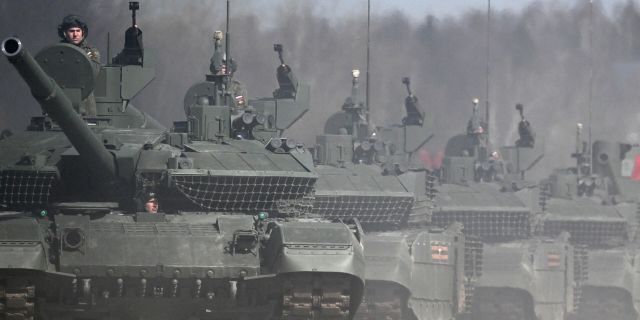The Russian army has received new T-90M tanks. Will this be enough to resist NATO?
The Russian army has received a new batch of T-90M "Breakthrough", writes MWM. It was believed that this tank provides Russia with parity with the most combat-ready NATO vehicles. However, the situation is changing, and Moscow should properly invest in the T-14, the author of the article warns.
The Russian army has received a new batch of T-90M "Breakthrough" main battle tanks from Uralvagonzavod. Apart from the experimental units of the T-14 "Armata", today it is the most combat-ready type of tanks in the Russian armored forces. Before the start of the Russian-Ukrainian conflict in February, the country's Defense Ministry planned to purchase about 600 T-90M, although most of them will be obtained by upgrading old T-90s already in service. The tank first entered service with the Russian army in April 2020, and its tests were completed two months earlier. Among other things, he received a new 2A46M-5 cannon and a Kalina fire control system, an Afghanit active protection system and a Relict dynamic protection, as well as additional armor that isolates ammunition from the rest of the tank and reduces its vulnerability to detonation. <...> The T-90M not only has much greater survivability, but also much better situational awareness (especially thanks to network-centric capabilities and a variety of modern thermal imaging sights), and its new main gun is compatible with many new types of projectiles.
At the same time, it remains unclear how the T-90M program will be affected by the Russian-Ukrainian conflict and the accompanying increase in tension in relations with NATO. Most likely, it will depend on how Moscow itself assesses the characteristics of the current armored units, which are based on the T-72B3/B3M. Other important factors include the development of the T-14 program and the availability of the tank both in terms of acquisition and in terms of operating costs, as well as the preservation of high oil prices, which significantly increased the revenues of the Russian state. For a long time it was believed that the T-90M provides Russia with parity with the most combat-ready NATO tanks, since all members of the alliance, except the UK, use equipment from the early 80s or late 70s (for example, Leopard 2 or M1 Abrams). However, as a result of the decision of Poland and Turkey to purchase more powerful machines in South Korea in very significant quantities, Russia will be at an extremely disadvantage if it cannot properly invest in the T-14. Turkey's plans to purchase about a thousand Atlay tanks – a modification of the South Korean K2 built under license – as well as Poland's intentions to purchase about a thousand K2 and order even more powerful K3 tanks in the future pose a leading threat to Russia's superiority in armored vehicles — since further sale of advanced Korean vehicles to NATO countries remains very likely. To date, K2 and T-14 are considered the best in their league in terms of characteristics. The deployment of Korean tanks in Poland, in particular, will certainly affect the assessment of the future viability of the T-90M.

